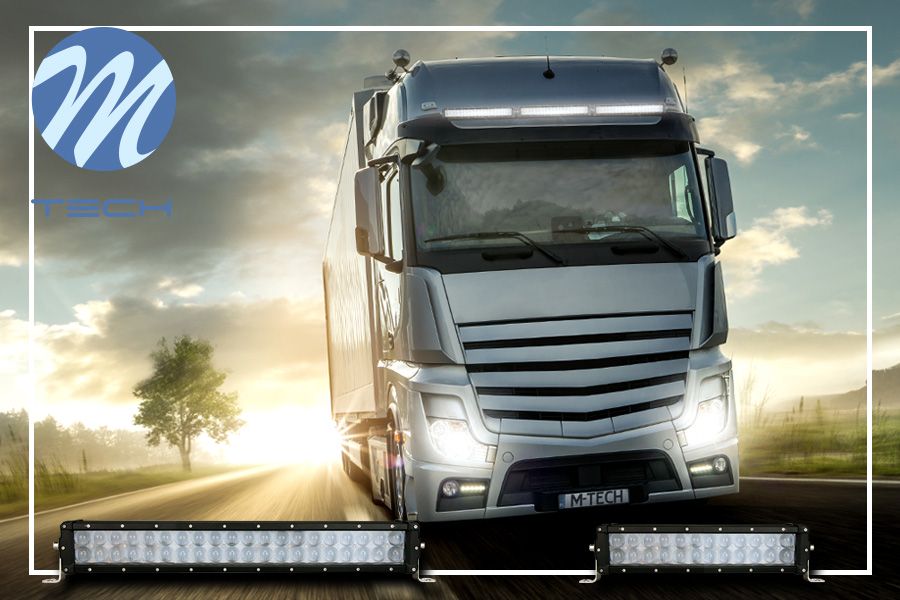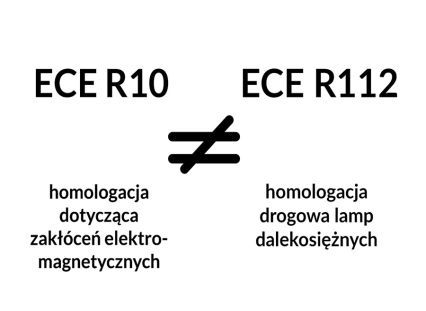Efficiency, effectiveness, sometimes fashion or just plain economy

These are just some of the arguments thanks to which the popularity of LED is constantly growing. Electroluminescent technology, availability of many solutions in the field of electronic components, forms and parameters of LEDs give manufacturers the possibility to invent new applications for LED lamps and constantly expand the range of offered products.
No matter what model of lights we are interested in and what application we have planned for them, we must remember about the legality of this solution. If we are installing work lights, the situation is not very complicated, because these kinds of lights do not meet the standards to be approved for road traffic, so using them as road lights can result in a fine, or even loss of vehicle registration document. Users who plan to buy this type of lights often fall prey to sellers who mention in their product descriptions that the lights offered are homologated. Thanks to such a simple and clever play on words and the homologation markings indicated on the lamp, it might seem that such a lamp can be used on public roads without any problems. Well, the truth is a bit different. The seller, while providing information about the alleged approvals, does not write anything about the road approval and thus he can also refute any later accusations, because the information is still true. This approval only informs in a cursory manner that the product meets the standards according to ECE R10 regulations. It also states that the product does not emit electromagnetic fields that could in any way interfere with other electrical devices in the vehicle. However, if you intend to use this type of auxiliary lighting on the road, it is worth ensuring that the lights comply with the standards and are approved in accordance with ECE regulations R23 for reversing lights.

Long-range headlights, sometimes called “driving lights” and more commonly known as “halogens”, are a kind of cult accessory on every truck. The powerful lamps have a kinds of peculiarity that encourages many to install them in their cars, not necessarily trucks. While the road homologation of these lamps according to ECE regulation R112 is a matter of course, there are still a few things to pay attention to. The reference number is also an important marking for the approval. This indicated the luminous intensity value. There are fixed values: 7.5; 10; 12.5; 17.5; 20; 25; 27.5; 30; 37.5; 40; 45; 50 per headlamp. The number indicating the parameter of a given headlamp should be included in the approval markings. According to the EU regulations, a car equipped with additional road lighting cannot have more than 4 luminous points and the sum of the reference numbers cannot be higher than 100 or the value of the light intensity emitted in total by these headlights cannot exceed 480 lux. If this value is exceeded, the light must be covered according to the regulations. It is not enough to have an additional switch in the cab to deactivate the operation of this lamp, because according to the regulations a lamp that is “permanently switched off” but is uncovered is inoperative.
With regard to the light sources that are used in long-range lamps, until recently, almost only halogen bulbs were used. From time to time you can find accessory discharge lamps, i.e. popular “xenons”. At the moment, LED lamps are the most frequently purchased due to their increased efficiency and attractive appearance. Moreover, these lamps are mostly found on the market at a more affordable price than traditional halogens.
Despite the ever-increasing popularity of LED lamps, there are still plenty of drivers on the road who opt for traditional solutions. In the case of conventional driving lamps, which work on the basis of a car bulb, you also have to pay attention to another homologation issue. While all the parameters mentioned above are equally important, it is necessary to check whether the bulb used is also road approved. The parameters for automotive bulbs are defined by the ECE R37 regulation, where one of the specified parameters is the light colour and this is set at 4200K. Although bulb manufacturers offer light sources on the market, which are supposed to reproduce the effect of xenon lamps, the use of such bulbs completely excludes the legality of the lamp. The same applies to more and more common LED retrofits, i.e. replacements of traditional light bulbs. Solutions of this type do not meet any European standards at the moment and are not allowed to be used as a source of light in headlights either. However, what if we really want to make the appearance and lighting effect of our halogens more attractive? There are models of halogen bulbs available on the market with a special coating applied to the glass bulb. This type of filter, depending on the model of the bulbs, may give an advantage in the form of a cold glow or slightly whiter light, but it should be remembered that even if the colour of light is within the limits of approval, this filter stops some of the light and the light emitted by our halogens will be less bright. It is analogous with the use of long-range lamps, the shade of which has been discoloured blue. The power of those filters, that is their deep blue colour, not only often exceeds the standards of the approved light colour, but it albo limits the light emission.
The range of accessory lamps available on the market is very extensive and includes quite a few models from each group. You can choose among models differing in performance as well as aesthetic values. However, before making a purchase, it is worth considering carefully what our expectations are, and then when choosing lamps, take into account compliance of the chosen configuration with traffic regulations, and it will certainly save a lot of complications.
Dawid Bystroń
Product Manager
